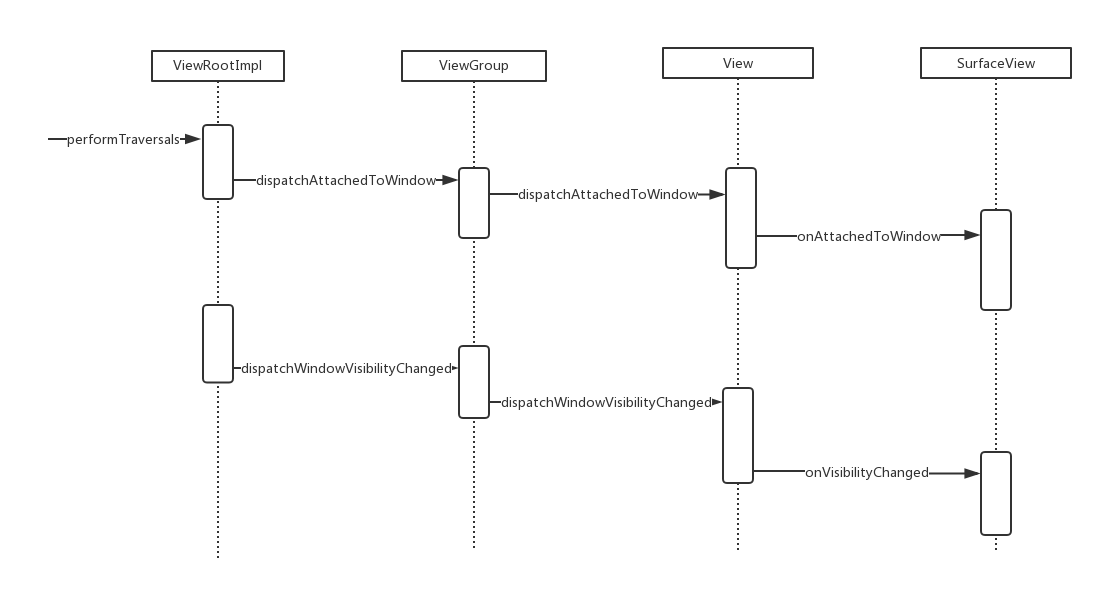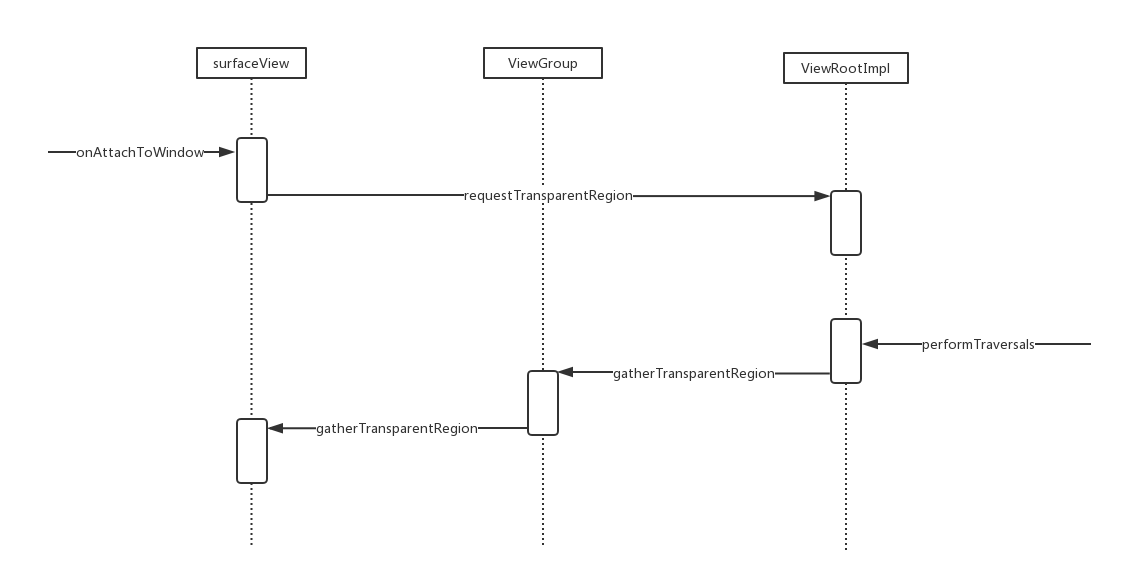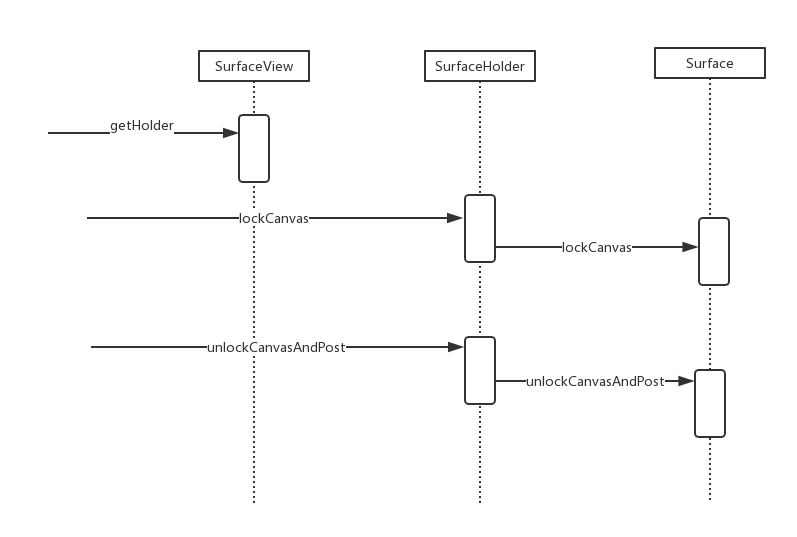surfaceView的建立
整体流程

performTraversals
1 | private void performTraversals() { |
dispatchAttachToWindow
1 | /** |
onAttachToWindow
1 | /** |
dispatchWindowVisibilityChanged
1 | /** |
onVisibilityChanged
1 |
|
updateWindow
1 | /** |
surfaceView挖洞
整体流程

requestTransparentRegion
1 |
|
performTraversals
1 | private void performTraversals() { |
gatherTransparentRegion
1 |
|
1 | /** |
surfaceView的绘制
整体流程

getHolder
1 | /** |
lockCanvas
1 | public class SurfaceView extends View { |
unlockCanvasAndPost
1 | public class SurfaceView extends View { |
一般步骤
1 | SurfaceView sv = (SurfaceView )findViewById(R.id.surface_view); |